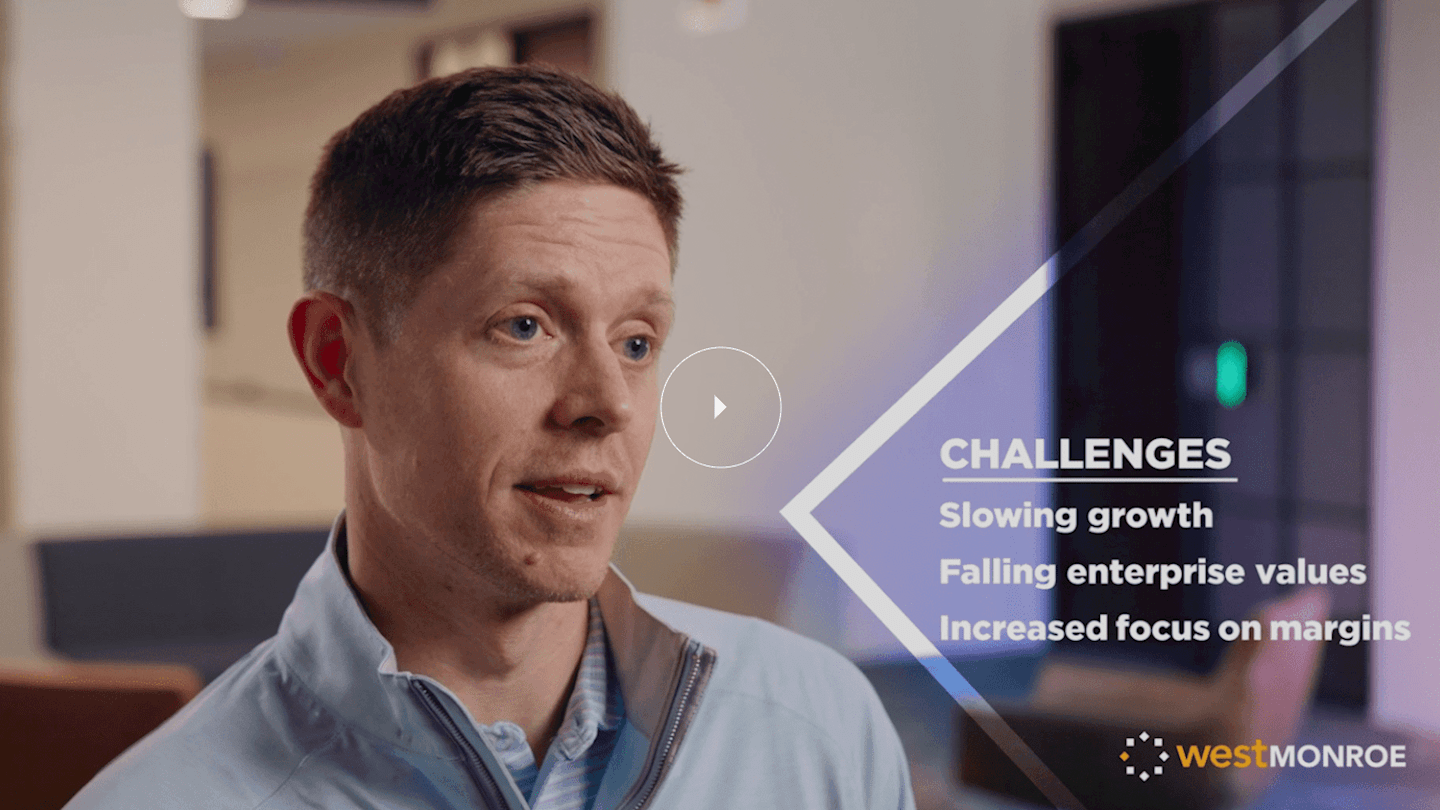2023 High-Tech and Software Outlook: Mid-Year Update
Exploring the emerging trends in the High-Tech & Software space and a look back at our initial predictions for 2023
How can you do more with the same—or even less?
That question spurred our 2023 High-Tech and Software Outlook in December as rising interest rates and an uncertain economic climate cut into the sector’s profitability.
Those storm clouds haven’t completely dissipated. Nearly 200,000 tech employees have been laid off in the first five months of this year alone.
Interest rates hit a 16-year high. The failure of Silicon Valley Bank shook up an already fragile sector and fundraising environment. Still, while most analysts and tech executives feel that 2023 will continue to pose difficulties, the market has at least begun to stabilize.
“In today’s environment, tech companies are continuing to realize the importance of—and feeling increased pressure to—optimize costs,” says Dhaval Moogimane, leader of West Monroe’s High-Tech and Software practice. “Most tend to focus on headcount, but there are many other levers to look at when it comes to software businesses. As for reductions in force, careful attention must be paid to the impact of these moves.”
In many cases, such efforts are starting to yield real results. Take Meta for example: After several rounds of layoffs, its stock price shot up 20% on the heels of Mark Zuckerberg’s proclamation that 2023 will be “the year of efficiency.”
That’s in line with the key message of our outlook, namely that companies that can optimize costs will come out of this turbulent market stronger, nimbler, and well-positioned to thrive in the future.
Emerging trends
What’s changed in the first half of 2023? Two areas are having a major impact:
The rapid development of artificial intelligence/machine learning creates new challenges and new opportunities.
As ChatGPT and other generative AI technologies grab headlines, it’s clear that AI/ML technology is a must-have for organizations in the tech sector. Generative AI alone could increase global GDP by 7% in the next decade.
As with any other paradigm shift, new opportunities and challenges abound. Though AI and other technologies are expected to create millions of new jobs, even more are at risk of being displaced—and roughly a quarter of companies are turning to AI to address labor shortages. Cybersecurity risks will only deepen with the deployment of generative AI, which could be harnessed by bad actors. New regulatory requirements are expected to pick up worldwide, too.
Despite these headwinds, high-tech and software players will have ample opportunity to play a leading role as demand for AI/ML applications continues to surge in areas ranging from supply chain optimization to data analytics to content generation and more.
SVB’s collapse underscores the importance of profitability.
The failure of the so-called “Godfather of the Silicon Valley banking ecosystem” sent shockwaves through the technology industry, making an already difficult capital environment even more challenging for technology executives.
Silicon Valley Bank “not only provided payroll services, loans to founders against their illiquid credit, but lines of credit as well,” Matt Higgins, CEO of RSE Ventures, explained to CNBC. “And a lot of these companies were having trouble already raising equity and they were counting on those lines to extend their runway, to push out the cash burn beyond the recession we all expect.”
The bottom line? The failure of SVB only heightens the importance of profitability and disciplined spending—a key focus of our 2023 outlook.
How high-tech and software companies can further optimize costs in 2023

How our predictions are playing out in 2023
Macroeconomic and geopolitical headwinds persist.
Though inflation has eased some in 2023, interest rates continue to rise—albeit at a slower and more deliberate pace. Ongoing geopolitical tensions, like the war in Ukraine, continue to pose cybersecurity-related risks. New hurdles for the tech industry on that front include heightened regulation, with the Biden administration seeking legislation to hold software firms liable for their products’ security protections.
Labor optimization remains a key focus.
Our outlook painted a complex picture of the tech sector’s labor market, one where layoffs and hiring freezes were expected to pick up alongside continued competition for top talent. That’s still the case today. Though layoffs continue, laid-off workers have also been absorbed back into the workforce. This means organizations must strike the right balance when it comes to hiring: pursuing efficiencies wherever possible (e.g., through best-shoring, automation, strategic hires, etc.) while still competing for top talent.
The slow fundraising environment continues.
As predicted earlier this year, the IPO market slumped and low valuations persist, while global VC funding in Q1 saw a 53% decline from Q1 2022. SVB’s failure only adds to the difficult fundraising climate, in which sustained cash flow and profitability reigns supreme—a reversal of the emphasis on topline growth during the tech boom.
“Companies need to move beyond a short-term mindset with regards to how they think about costs—be it by investing in business model innovation, seeking efficiencies in areas like cloud hosting, or broadening their ability to leverage data, AI, and automation,” Moogimane says.

2023 Outlook: The Future of the High-Tech & Software Industry
The challenges, trends, and actions that will define the year in high-tech & software. Download our 2023 Outlook.



